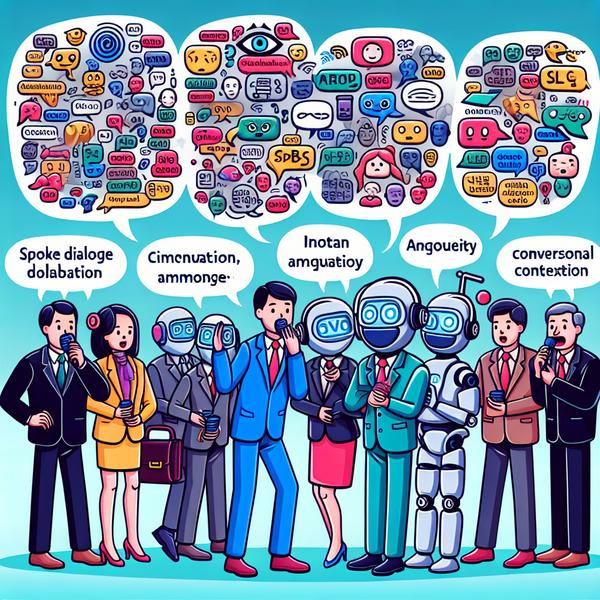
Evaluating the abilities of spoken dialogue models (SDMs) brings unique challenges, as they need to grasp the complexities of real-world conversations. Unlike written text, spoken interactions involve subtle nuances like intonation, ambiguity, and conversational context. The newly introduced C3 benchmark from China bridges this gap by providing a bilingual evaluation framework for SDMs. This bilingual dataset examines key aspects like phonological ambiguity, multi-turn interactions, and semantic challenges—setting a foundation to improve digital assistants, customer bots, and other AI tools.
Understanding the Role of Spoken Dialogue Models
- Spoken Dialogue Models are a key part of today’s conversational AI, often used in devices like Alexa or Google Assistant. But unlike simple text-based models, SDMs need to understand speech-related challenges.
- Consider asking a smart assistant, “What’s the weather today?” A machine might easily answer with text. Now imagine if you casually added, “Uh, like outside?” A well-performing SDM must interpret and blend multi-layered speech, context, and even hesitation.
- Such models must capture the rhythm, stress, and tone changes in speech. For instance, in tonal languages like Mandarin Chinese, two words with identical pronunciation but different intonations may carry entirely different meanings (like “ma” being mother vs. horse).
- Despite progress, challenges like omissions (users skipping words), ambiguity, and multi-turn interactions require smarter approaches. Current SDMs make errors in understanding due to limited training datasets tailored for such complexities.
The Significance of the C3 Bilingual Benchmark
- The C3 benchmark was created to address the gaps in SDM evaluations, offering 1,079 English and Chinese instances crafted for real-life spoken scenarios.
- Imagine being in a bilingual meeting, where phrases shift rapidly between two languages. That’s what makes C3 special—it’s designed for both English and Chinese, making it versatile for global applications in AI voice technology.
- For accuracy, C3 even includes audio-text paired samples, eliminating the guesswork. Whether it’s understanding improper pauses or figuring out who a pronoun (like "he") refers to, SDMs are tested on abilities crucial for natural communication.
- By including challenging phenomena like phonological ambiguity and coreference resolution, this dataset ensures any AI trained on it will handle both simple and intricate conversations.
Innovations in Evaluation: LLM-as-Judge
- One standout innovation of C3 is how it evaluates models. Researchers used large language models (LLMs) such as GPT-4o as automatic judges, evaluating responses and matching them with human judgments for consistency.
- Think of it as an expert panel team, where LLMs review whether AI understands user intent or not. It uses robust statistical measures—ensuring high accuracy rates compared to traditional tests.
- This method is efficient as it removes overheads like manual scoring while still including human checks for intonation-heavy or ambiguous sentences.
- In simpler terms, if a human says, “Is my cake done baking?,” and the AI replies improperly, LLM judges would weigh its logical correctness just as humans naturally would.
Insights Gained from C3 Results
- Findings reveal that current state-of-the-art models like GPT-4o and Qwen2.5-Omni still struggle regarding phonological and semantic ambiguity. For example, distinguishing between “their” and “there” notably drops accuracy levels in Chinese below 4%.
- Interestingly, these models perform better with context tracking compared to managing ambiguous signals. If an AI bot is asked “What about tomorrow?” without prior hints, it might stumble unless trained rigorously on multi-turn context.
- Language also plays a big role. SDMs show stronger results in English compared to Chinese datasets, underlining the need for CAI tools tailored to tonal languages.
- C3 also affirms one gold standard in AI development—recognizing a problem is always easier than crafting an ideal solution. For instance, detecting somebody missed words in a sentence is simpler compared to fixing them.
Implications for Future Conversational AI
- The launch of C3 is less about competition and more about raising global standards. By being open-source, the dataset allows new-generation developers globally to improve their SDMs holistically.
- In real-world scenarios, this means AI won’t stop at guessing answers based on scripts but can truly lead free-flowing yet precise dialogue sessions.
- From better customer service interactions to accessible bilingual education tools, the possibilities are endless. Developers now receive data customization ideas based on phonological intricacies of languages they’re targeting.
- Imagine a virtual tutor helping a student learn Chinese pronunciation while simultaneously understanding any clarification questions posed in fluent English during the lesson. That’s the dream C3 hopes to realize.